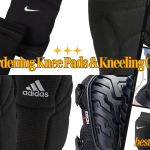Participating in sports is not only a way to stay fit and have fun, but it also comes with a set of health and safety risks. Athletes and sports competitors are prone to a range of injuries and potential long-term health issues due to the physical demands of their sports. Understanding and managing these risks is crucial for athletes to perform at their best while staying safe.
Key Takeaways:
- Athletes and sports competitors face various health and safety risks in their chosen sports.
- Common injuries faced by athletes include sprains, strains, fractures, concussions, and overuse injuries.
- Different sports come with their own set of risks and hazards, such as contact sports, extreme sports, and repetitive motion sports.
- Potential long-term health concerns for athletes include chronic injuries, degenerative conditions, and mental health issues.
- To manage health and safety risks, effective risk management strategies should be implemented, including proper training, equipment safety, and the role of coaches and medical professionals.
Common Injuries Faced by Athletes
Athletes are no strangers to injuries, given the physical demands of their sports. Injuries can range from minor sprains and bruises to serious fractures and concussions. Understanding the most common injuries faced by athletes can help prevent them and ensure prompt treatment if they occur.
Some of the most common injuries faced by athletes include:
| Type of Injury | Description | Preventive Measures |
|---|---|---|
| Sprains | Stretching or tearing of ligaments, often in the ankle or knee | Proper warm-up and stretching before activity, using appropriate footwear |
| Strains | Stretching or tearing of muscles or tendons, often in the hamstrings or groin | Proper warm-up and stretching before activity, gradual increase in intensity and duration of exercise |
| Fractures | A break in the bone, often due to high-impact or repetitive stress | Using protective equipment, taking breaks during high-impact activity |
| Concussions | Traumatic brain injury caused by a blow to the head | Using appropriate protective headgear, avoiding high-risk activities |
| Overuse injuries | Damage to muscles, tendons, or bones due to repetitive use | Gradual increase in intensity and duration of exercise, incorporating rest and recovery time |
While many of these injuries can be prevented or managed with proper training, equipment, and rest, they can also have long-term consequences if left untreated. Athletes should seek medical attention if they experience persistent pain, swelling, or limited range of motion.
It’s essential for athletes to prioritize injury prevention and seek prompt treatment when injuries occur to ensure they can continue performing at their best.
Sports-Specific Risks and Hazards
Every sport has its unique set of risks and hazards, which athletes should be aware of to prepare and prevent injuries. Understanding sports-specific risks can also aid in designing effective training and conditioning programs that focus on preventing injuries. In this section, we will take a closer look at the sports-specific hazards and the possible injuries associated with them.
Extreme Sports
Extreme sports, such as skateboarding, snowboarding, and surfing, require a high level of skill and physical fitness. Although these sports are thrilling and exciting to participate in, they come with an increased risk of injury. Athletes in extreme sports are highly susceptible to severe head injuries, broken bones, and spinal cord injuries due to the high speeds and heights involved in these activities.
Repetitive Motion Sports
Sports like tennis, golf, and baseball involve repetitive motions, such as swinging and throwing, which can lead to chronic injuries like tennis elbow and rotator cuff injuries. These injuries can be exacerbated by poor technique, lack of proper conditioning, and overuse, which can ultimately result in decreased performance for the athlete.
Contact Sports
Contact sports like football, rugby, and martial arts have an increased risk of physical injury due to the nature of the sport. Athletes in these sports often suffer from concussions, broken bones, dislocations, and ligament tears. Proper training, protective equipment, and strict rule enforcement can reduce the risk of injury in contact sports.
Water Sports
Water sports like swimming, diving, and water polo come with their own set of hazards. Athletes participating in these sports are at risk of drowning, hypothermia, and other water-related injuries. Coaches and medical professionals should ensure that athletes are properly trained in water safety and are equipped with appropriate safety gear.
Understanding sports-specific risks and hazards can help athletes prepare for potential injuries and take proactive measures to prevent them. Training and conditioning programs should be designed to address the unique risks associated with each sport, while coaches and medical professionals should work together to ensure the safety and well-being of athletes.
Long-Term Health Concerns for Athletes
Athletes may be at increased risk of experiencing long-term health concerns, both physical and mental, due to the intense nature of their sports. These long-term concerns can affect their post-athletic life and well-being.
Physical health concerns for athletes can include:
| Condition | Description |
|---|---|
| Chronic injuries | Repeated exposure to injuries can cause damage to tissues and joints, potentially leading to chronic pain or impairment. |
| Joint degeneration | Athletes who participate in high-impact sports may experience wear and tear on their joints, leading to osteoarthritis later in life. |
| Cardiovascular issues | High levels of physical exertion can cause damage to the heart and cardiovascular system, increasing the risk of heart disease and other conditions. |
Mental health concerns for athletes can include:
- Depression and anxiety brought on by post-career changes and loss of identity.
- Eating disorders, due to the emphasis on weight and body image in some sports.
- Substance abuse, as a result of the pressures and demands of athletic competition and injury recovery.
It is crucial to address these long-term concerns while athletes are still active. This can be done by encouraging proper training and injury prevention techniques, providing access to medical care, and promoting overall physical and mental wellness.
Managing Health and Safety Risks in Sports
As an athlete or sports competitor, it is important to take proactive steps to manage health and safety risks. This includes implementing effective risk management strategies that can help prevent injuries and promote well-being. Here are some tips for managing health and safety risks in sports:
Proper Training and Conditioning
One of the most important ways to manage health and safety risks is by proper training and conditioning. This includes developing good warm-up and cool-down routines, practicing proper technique, and gradually increasing the intensity of your workouts over time. By doing so, you can help prevent injuries such as strains, sprains, and overuse injuries.
Equipment Safety
Another key aspect of managing health and safety risks is using appropriate equipment and ensuring that it is in good condition. This includes wearing properly fitting helmets, pads, and other protective gear while participating in contact sports or extreme sports. It is also important to regularly inspect your equipment for any signs of wear and tear and to replace it as needed.
Rule Enforcement
Enforcing the rules of your sport can also help manage health and safety risks. This includes following guidelines around proper behavior and sportsmanship, as well as adhering to rules around contact and other potentially dangerous activities. By doing so, you can help prevent serious injuries and promote a safer sports environment for all.
The Role of Coaches and Medical Professionals
Finally, coaches and medical professionals can play a critical role in managing health and safety risks. They can help with proper training and conditioning, provide guidance around equipment safety, and ensure that rules are being followed. Coaches can also help identify potential health concerns early on and take steps to address them before they become more serious. Medical professionals, such as athletic trainers or team physicians, can provide expert advice around injury prevention and treatment.
By taking proactive steps to manage health and safety risks in sports, athletes and sports competitors can help prevent injuries and promote long-term well-being. With proper training, equipment, and guidance from coaches and medical professionals, athletes can strive for optimal performance while minimizing the chances of harm or long-lasting repercussions.
Conclusion
Athletes and sports competitors face a range of health and safety risks that can affect their performance and well-being. By understanding the common injuries, sports-specific hazards, and potential long-term health concerns associated with their sports, athletes can take proactive steps to minimize the chances of harm or lasting repercussions.
Effective risk management strategies, such as proper training and conditioning, equipment safety, rule enforcement, and the involvement of coaches and medical professionals, are essential to ensure safe and sustainable sports environments. These measures not only protect athletes but also contribute to the overall integrity and success of the sport.
It is important to recognize that athlete well-being goes beyond physical health. Mental health issues also need to be addressed and supported. Coaches, trainers and medical professionals need to work together to ensure that athletes get the necessary help and support they need to achieve optimal performance both on and off the field.
In Summary
By prioritizing athlete well-being, we can create safer and more sustainable sports environments. Understanding and managing health and safety risks is essential for athletes to perform at their best while staying safe. It’s up to all stakeholders in the sports industry – coaches, athletes, medical staff, and governing bodies – to work together to achieve this goal.










